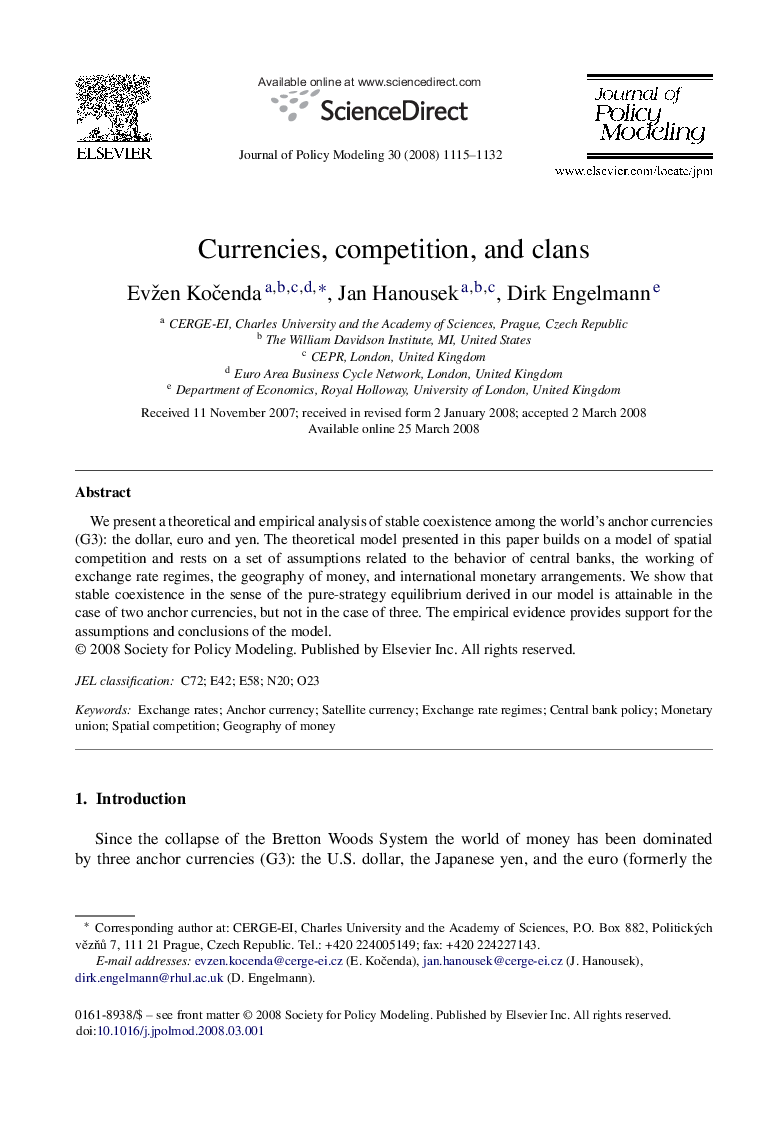| Article ID | Journal | Published Year | Pages | File Type |
|---|---|---|---|---|
| 968374 | Journal of Policy Modeling | 2008 | 18 Pages |
Abstract
We present a theoretical and empirical analysis of stable coexistence among the world's anchor currencies (G3): the dollar, euro and yen. The theoretical model presented in this paper builds on a model of spatial competition and rests on a set of assumptions related to the behavior of central banks, the working of exchange rate regimes, the geography of money, and international monetary arrangements. We show that stable coexistence in the sense of the pure-strategy equilibrium derived in our model is attainable in the case of two anchor currencies, but not in the case of three. The empirical evidence provides support for the assumptions and conclusions of the model.
Related Topics
Social Sciences and Humanities
Economics, Econometrics and Finance
Economics and Econometrics
Authors
Evžen Kočenda, Jan Hanousek, Dirk Engelmann,
